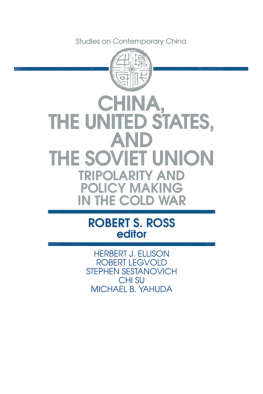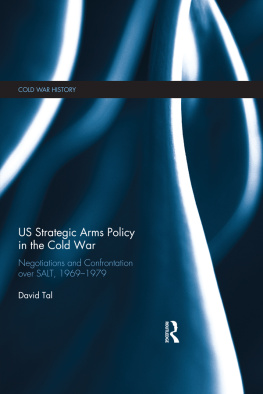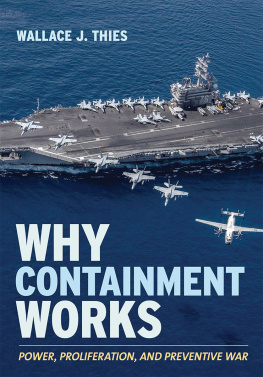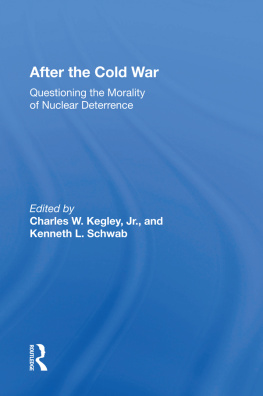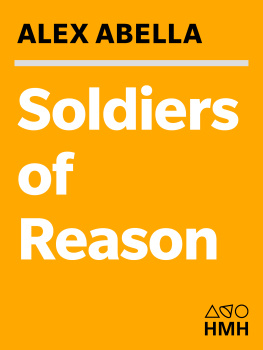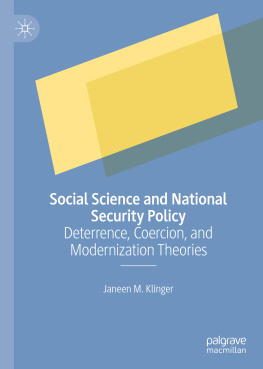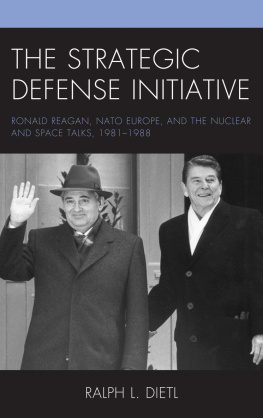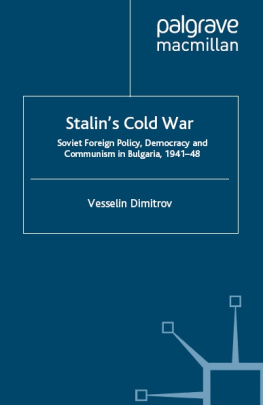THE COLD WORLD THEY MADE

The Strategic Legacy of Roberta and Albert Wohlstetter
RON ROBIN

Cambridge, Massachusetts
London, England
2016
Copyright 2016 by the President and Fellows of Harvard College
All rights reserved
Jacket art: Plane Flying Over America, 1954. American School (20th century). Private Collection. GraphicaArtis / Bridgeman Images
Jacket design: Annamarie McMahon Why
978-0-674-04657-3 (alk. paper)
978-0-674-97302-2 (EPUB)
978-0-674-97303-9 (MOBI)
The Library of Congress has cataloged the printed edition as follows:
Names: Robin, Ron Theodore, author.
Title: The cold world they made : the strategic legacy of Roberta and Albert Wohlstetter / Ron Robin.
Description: Cambridge, Massachusetts : Harvard University Press, 2016. | Includes bibliographical references and index.
Identifiers: LCCN 2016011269
Subjects: LCSH: Wohlstetter, Albert. | Wohlstetter, Roberta. | National securityUnited States. | Cold WarInfluence. | United StatesMilitary policy.
Classification: LCC UA10.5 .R62 2016 | DDC 355/.03357309045dc23 LC record available at http://lccn.loc.gov/2016011269
Contents
IN THE HEADY, formative years of American strategic thought, when the bomb loomed large, the analyst was king, and the RAND Corporation ruled the policy world, Americas wizards of Armageddon would gather at the Laurel Canyon home of Roberta and Albert Wohlstetter to share insights on existential issues. A formidable cohort of thermonuclear Jesuits would huddle around Albert, while Roberta played hostess. A photograph, part of a fawning Life magazine profile, has etched this picture into the collective memory of RAND. Albert sprawls comfortably, surrounded by awkwardly seated colleagues, who appear somewhat unsettled, perhaps by the contrast between the eclectic setting of the Wohlstetter domicile and the doomsday theories that preoccupied their minds. Roberta is nowhere to be seen. She is presumably fussing around in the kitchen, just outside the frame.
In another photograph from their stunning International Style abodea modernist masterpiece designed by their next-door neighbor, the (allegedly) card-carrying communist architect Josef Van der KarAlbert perches on an Eames chair. Book in hand, he basks in the collective adoration of his daughter, Joan, and his wife, Roberta, who poses from a distance. The artifacts of modernism surround AlbertEames furniture, sliding walls, a table of his own design with inverted sawhorses. The room is encased in wraparound windows, drawing the Southern California landscape into the translucent dwelling. The women in the photographs are paragons of traditional feminine domesticity. Albert graciously takes time from his reading to chat with his doting daughter; Roberta busies herself preparing appetizing delights for the ravenous intellectual.
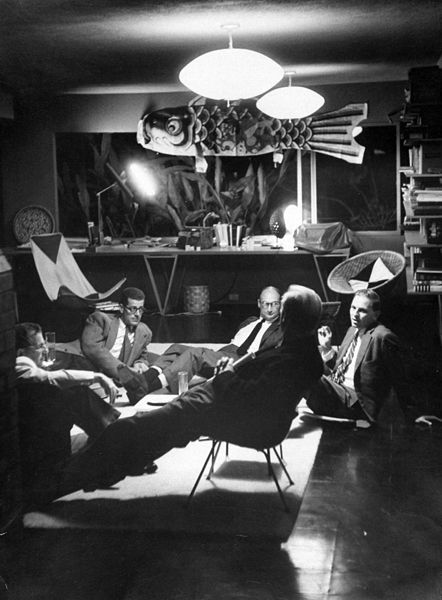
After hours, RAND Corporation analysts meet in the home of Albert Wohlstetter, 1958. Photograph by Leonard McCombe/The LIFE Picture Collection/Getty Images.
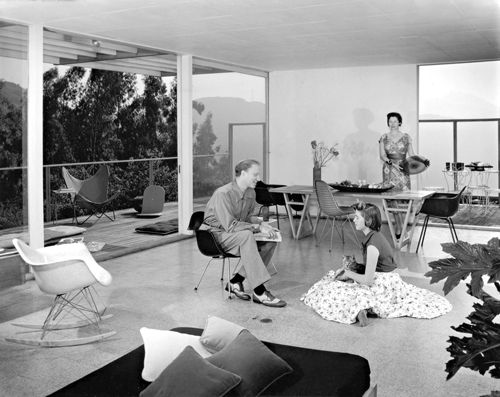
Joan Wohlstetter chats with her father, Albert, as her mother, Roberta, prepares a meal in their Laurel Canyon home. Photograph by Julius Shulman. Architect: Josef Van der Kar. J. Paul Getty Trust. Julius Shulman Photography Archive, 19361997. The Getty Research Institute, Los Angeles (2004.R.10).
Histories of RAND have reinforced these images. Albert was the guru, Roberta the den mother, Albert holding court on his views of the world, Roberta dishing out delectable souffls, albeit without missing a beat of the conversation. Alberts dominant persona, his love of the limelight, and his gladiatorial debating style facilitated a skewed portrayal of the Wohlstetter world. But this somewhat precious 1950s vision conjured by Fred Kaplanthe cerebral husband waited on by a doting homemakeroversimplifies a more complex reality.
To begin with, Roberta and Albert Wohlstetter were a team. At the very least, their intellectual contributions were cooperative ventures. Albert was a brilliant scholar in his own way, but he was beholden to his wifes own acumen and body of work. His intellectual achievements were built on Robertas insight about cognitive fallibilities in war and other forms of confrontation. Albert transformed her observations into a formidable doctrinal edifice. The ideological scaffoldings of the Wohlstetter Doctrine, invariably attributed to Albert, made early appearances in Robertas initial forays into the world of scholarshipas a social scientist, as a literary scholar, and finally as a historian of the nation at war.
Representations of the Wohlstetters living room as either a war room or a traditional domestic hearth obscure another important aspect of the Wohlstetters world. Like so many other members of their generation, Roberta and Albert were social experimentalists who flirted with radical ideological positions before landing in the vicinity of the Vital Center. Throughout their career, they also published controversial treatises on the nations domestic issues. Prior to joining RAND, in particular during their tempestuous student days, they produced formidable scholarship on literature and analytical philosophy. Their intellectual inquisitiveness provides an important background for understanding the underpinnings of their later work on strategy.
Most scholars have ignored the Wohlstetters social worldview. Their domestic concerns and personal past pop up every now and again as a curiosity or an irrelevant sideshow with no bearing on their strategic thought. And yet, Deborah Welch Larson reminds us, social scientific theories are invariably shaped by their intellectual, social, and political contexts, and deterrence theory is no exception. I argue here that disregarding the Wohlstetters past, their cultural inquests, and their studies of the nations social challenges is like staging Hamlet without the Ghost; motivation and actions become obscured by imperfect knowledge of the plot.
The Biographical Challenge
Albert and Roberta Wohlstetter are hardly household names outside policy circles. Anonymity, however, should not be confused with lack of resonance. Nor, for that matter, did the shroud of obscurity descend on the Wohlstetters by volition. Throughout much of his career, Albert, in particular, pursued the public limelight. By some accounts, Albert was the most influential unknown man in the world for the past half century.As the alpha male of strategic studies, he aggressively promoted his panaceas for the nations challenges, sometimes in partnership with Roberta but often claiming center stage for himself alone.
The Wohlstetters oeuvre grappled with the strategic uncertainties of war, in general, and of the Cold War, in particular. Robertas study of surprise at Pearl Harbor and Alberts challenge to the dominant paradigm of a stable balance of terror between the two nuclear superpowers have provoked constant commentary and continuous reflection. Their significance, however, is disputed. Most historical assessments of the Wohlstetters tend to relegate Robertas inquest of quintessential military surprise (



